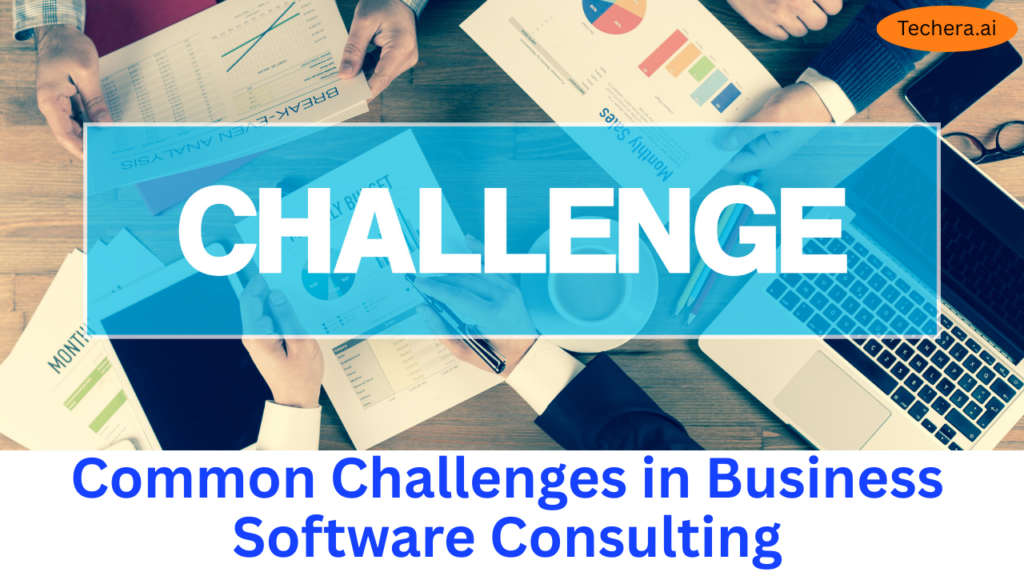
Explore the most common hurdles faced in Business Software Consulting and discover practical strategies to overcome them. From communication gaps to integration issues, this blog breaks down real-world challenges and offers expert insights to ensure successful consulting outcomes.
Introduction
Business software consulting can be a game-changer. But let’s face it, things aren’t always easy. Whether you’re a consultant or a business leader hiring one, challenges are inevitable. The good news? Most of these roadblocks are totally manageable if you know what to expect and how to tackle them head-on.
Understanding Business Software Consulting
https://www.bain.com/industry-expertise/technology/software/At its heart, business software consulting is all about bridging the gap between business needs and technology. Consultants come in to evaluate systems, understand workflows, recommend tools, and help implement the right solutions. They’re the strategic thinkers and tech whisperers guiding companies through digital transformation.
Common Challenges in Business Software Consulting

Misalignment Between Business Goals and Technology
One of the most common pitfalls? Tech being pushed for the sake of it, without tying it back to what the business is actually trying to achieve. This disconnect leads to wasted resources and underused software.
Resistance to Change
People love routines—even if they’re inefficient. Introducing new software shakes things up, and not everyone is thrilled. This emotional and cultural resistance can slow down even the best projects.
Budget Constraints
Businesses often underestimate the cost of successful implementation. They might budget for software but forget about consulting fees, integration costs, or post-launch support.
Poor Communication
When the client and consultant aren’t on the same page, everything falls apart. Misunderstood requirements and unclear expectations can derail even the most well-planned project.
Inadequate Requirements Gathering
Ever tried building something without a blueprint? That’s what skipping the discovery phase feels like. Vague requirements lead to scope creep and, ultimately, disappointment.
Integration Issues
Most companies don’t start from scratch—they already have existing systems. Making new tools work with old ones can be messy, especially when dealing with legacy platforms.
Lack of Technical Expertise
Sometimes, the internal team doesn’t have the skills to manage or maintain the new software. That can lead to overdependence on consultants, which isn’t sustainable long-term.
Unrealistic Expectations
Thinking a full transformation can happen in a month? Or expecting automation to magically solve all problems? Unrealistic timelines and over-the-top expectations can ruin trust and morale.
Also Read : How Business Software Consulting Helps Businesses Adapt to Market Changes
Change Management Failures
Change doesn’t stick unless it’s managed properly. Without training, support, and clear leadership, employees may revert to old habits—or worse, reject the software entirely.
Security and Compliance Concerns
Security and compliance are essential in today’s data-driven society. Many businesses overlook this until the final stages, which can cause major delays or legal trouble.
How to Overcome These Challenges
Aligning Technology with Business Objectives

Before touching any tech, get clear on your goals. Consultants should sit down with stakeholders, understand pain points, and define success metrics that tie directly to business growth.
Building a Change-Ready Culture
Want people to embrace new tools? Start by being transparent. Involve teams early, show them the “why,” and make leadership visible throughout the transition.
Managing Budgets Effectively
Set a realistic budget with wiggle room. Break the project into phases and prioritize high-impact deliverables first. This phased approach spreads out costs and builds momentum.
Enhancing Communication Channels
Schedule regular check-ins, document everything, and encourage open dialogue. Tools like Slack, Asana, or Microsoft Teams can help keep everyone on the same page.
Thorough Requirements Analysis
Run discovery workshops. Interview users. Map out current processes and ideal workflows. The more clarity you have upfront, the smoother the implementation.
Seamless System Integration
Work with consultants who understand both old and new systems. Use middleware to bridge gaps, and plan data migration carefully to avoid downtime.
Empowering In-House Teams
Invest in training and encourage a learning mindset. The more your team knows, the less you rely on external help—saving money and building internal resilience.
Setting Realistic Milestones
Break the project into sprints. Focus on achievable, bite-sized goals. This makes progress visible and helps build confidence with each win.
Leading Successful Change Management
Assign change champions within each department. Provide ongoing support after launch—don’t just throw software at people and hope it sticks.
Ensuring Security and Compliance
Bring compliance and security experts into the loop early. Regularly audit systems and stay current with laws like GDPR, HIPAA, or industry-specific standards.
Conclusion
Business software consulting isn’t without its challenges—but they’re not deal-breakers. In fact, many of these issues are avoidable with the right planning, mindset, and communication. The key is to treat consulting as a partnership, not a quick fix. By anticipating obstacles and tackling them strategically, businesses can set themselves up for long-term success.
Frequently Asked Question
Q. What’s the most common reason software consulting projects fail?
A. Misalignment between business needs and software capabilities is a top culprit. That’s why discovery and planning are critical.
Q. Can small businesses benefit from software consulting?
A. Absolutely! Consultants help small businesses get the most out of their limited budgets by recommending scalable, cost-effective tools.
Q. How long does a typical consulting engagement last?
A. It depends on the project. Some last a few weeks, others span several months, especially for full digital transformations.
Q. What should I look for in a good consultant?
A. Look for experience, clear communication, industry knowledge, and a collaborative mindset. References and past case studies help too.
Q. How do I get employee buy-in for new software?
A. Involve them early, explain the benefits, and provide hands-on training. People that assist in creating something are more likely to support it.

